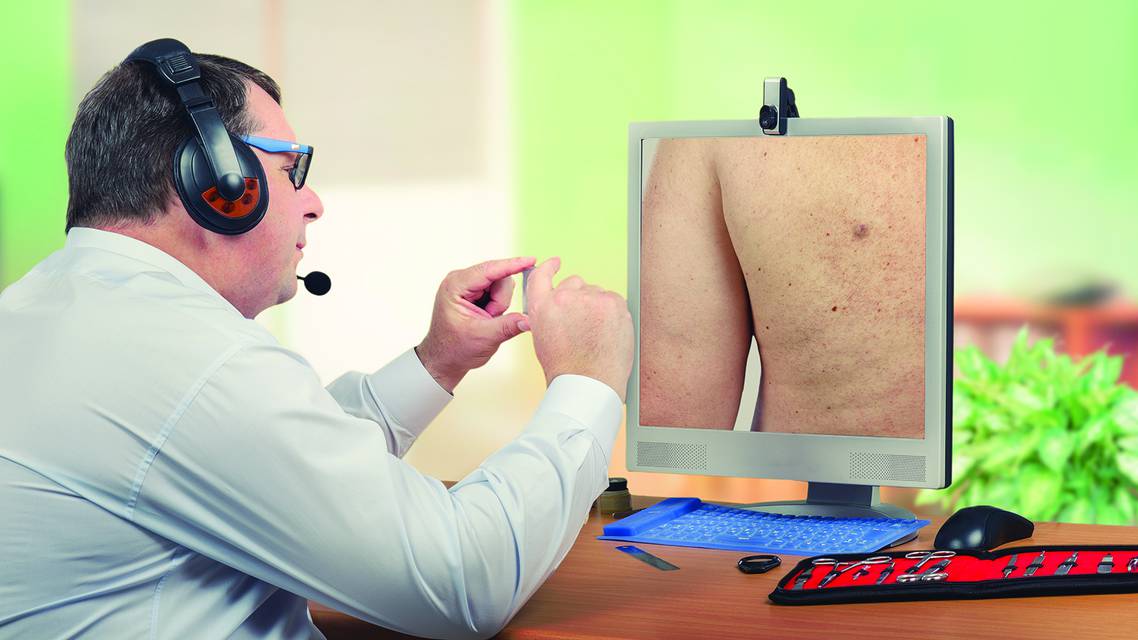Dermatology research continues to rely heavily on the collection of patient-reported outcomes (PROs) and complex clinician-reported outcomes (ClinROs) involving various scoring algorithms that are highly dependent on rater reliability, which can vary across clinicians. These outcomes are often connected to inclusion criteria and endpoint data, underscoring the importance of these measurements and the need to decrease variability. However, as the complexity of ClinROs and Clinical Outcome Assessments (COAs) increases, dermatology is looking to new methods to record and assess patient outcomes while decreasing variability in scoring. The latest technological development designed to facilitate dermatology research, remote image capture, is a testament to those efforts.
Current Strategies Are a Source of Complexity in Dermatology Research
Presently, there still exists a strong use case and high demand for electronic COA (eCOA) use in dermatology studies. For example, research relating to atopic dermatitis, psoriasis, and pruritus are common dermatological indications that benefit from applications of eCOA. Many PROs measure severity and symptoms of these diseases, and these assessments play a significant role in determining patient outcomes and treatment assignments.
However, common, disease-specific ClinROs used in dermatology protocols including the Scoring of Atopic Dermatitis Index (SCORAD), the Eczema Area and Severity Index (EASI) and the Psoriasis Area and Severity Index (PASI) involve a clinician examination of the patient. These assessments, though intended to score and understand the extent and severity of the dermatological condition, can result in varying scores based on clinician subjectivity. Due to the expansive number of ClinRO assessments and scoring algorithms in the field, reliability sometimes varies across assessments and examinations.
Addressing Patient Burden in Dermatology Research
Due to the number of COAs in these protocols, patients are often required to complete a significant amount of assessments throughout their participation in the clinical study. Patient burden throughout this process then becomes a critical concern. Considering the average attrition rate in clinical research can be high, it can be assumed that a significant portion of those participants drop out due to increased burden.
Similarly, patient travel time and distance are a significant factor to dropout rates in clinical research. By enabling remote image capture in dermatology research, the requirement to travel to and from the site to receive clinician feedback on developing conditions may be decreased. Decreasing the number of patient visits to a clinic during a clinical trial aims to significantly decrease the odds of attrition.
Promoting a Patient-Centered Approach Through Remote Image Capture
Remote image capture methods enabled through eCOAs are a novel approach to capturing supplemental data that complements the patient’s reported signs and symptoms. For example, in dermatology, if a patient reports a rash or skin anomaly, they could also upload a picture for clinician review. This capability provides a breakthrough in dermatology research, by adding controlled, supplemental context to patient experiences.
Remote image capture allows for clinician review of developing conditions in between clinic visits, making clinic visits more targeted and efficient. Further, it increases accuracy and reliability by providing valuable context that can be used to support and inform the clinician’s examination of the patient and completion of disease-specific ClinROs. Current evaluations often rely on patient-reported symptoms. This undoubtedly leaves room for subjectivity based on what the patient is reporting and how the clinician categorizes and assesses that feedback.
With remote image capture technology, symptoms and assessments are supplemented by images, which increases accuracy in the collection of COAs. Providing remote image capture also allows clinicians to better understand patient experience and symptoms in between site visits. The intention of remote image capture is not to replace traditional COAs but to supplement and provide greater context to the patient experience.
While remote image capture offers numerous benefits, some challenges need to be addressed. Privacy concerns around storing and transmitting patient images must be carefully considered and remote image capture must not compromise any personally identifiable information regulations.
The greater benefit of remote image capture in dermatology research is reducing patient burden, decreasing the number of COAs required to formulate patient assessment, and mitigating travel time to and from the clinic. Facilitating patient experiences in dermatology trials through remote image capture aims to mitigate clinical trial attrition and ensure that research continues within the allotted timeline and on budget. As clinical research continues to shift toward a decentralized model, remote image capture is emerging as a critical component of dermatological research success.
Melissa Mooney is Director of eCOA Solutions Engineering and eCOA Technologies at IQVIA.
Ready to Claim Your Credits?
You have attempts to pass this post-test. Take your time and review carefully before submitting.
Good luck!






